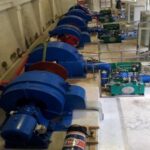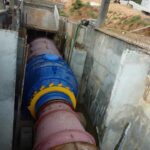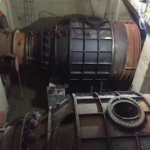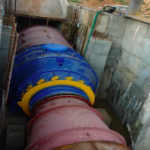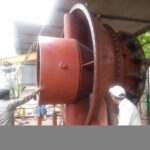Tubular type Water Turbine
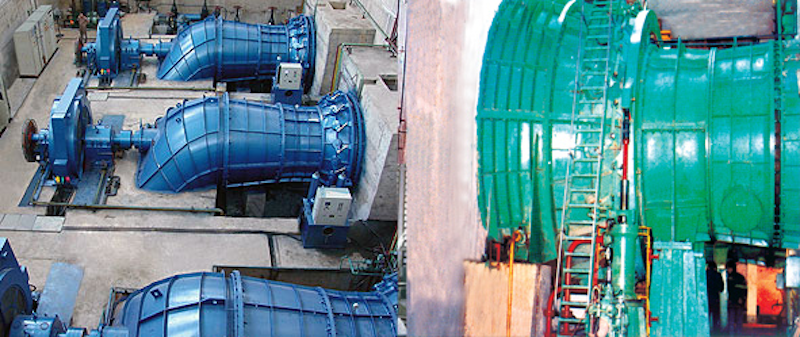
The tubular turbines are the best selection for the exploitation of tidal power and hydraulic power with extremely low heads and extremely large flow rates. They have large discharge, high specific and high efficiency, and needless excavation. They have been classified into Bulb, Pit, Siphon, and “S” types in the light of their structural types.
Specification:
Fixed blade type: GD; Adjustable blade type: GZ
The diameter of the runner: 0.8m-6m;
Suitable water head: H =2m- 20m;
Suitable flow: Q =1.0m3/s- 250m3/s;
Capacity of the generator unit: 200kw -60MW.
Tubular turbine generally has two categories: fully tubular and half tubular. The half Tubular turbine is divided into bulb, pit and shaft extension types, etc.
The generator’s rotor of the full tubular type unit is on the outer circle of turbine’s runner, whose application is less because of its difficult sealing.
For half Tubular turbine, the generator is separate from the hydro turbine:
Bulb type Tubular turbine unit: Generator set is installed inside the airtight bulb body, which has a compact structure, straight passage shape, high hydraulic efficiency and so it is widely used.
Shaft extension type tubular unit: The generator is installed outside; the main shaft of turbine extends to the outside of the draft tube.
Pit type tubular unit: The generator is installed inside a pit.
Tubular type turbine is actually horizontal installed axial flow turbine. The water from the reservoir flow through bulb head and then enter into the turbine along the passage between the outer wall of bulb body and the powerhouse concrete. The structures of tubular turbine and horizontal type axial flow turbine are basically similar. The differences between Bulb Tubular Turbine and Pit type Tubular turbine are the water diversion chamber, water distributor and draft tube.
Pit type Tubular turbine adopts conical water distributor that mainly includes the inner and outer chambers of the guide vane, guide vane, guide vane arm, connecting rod and control ring, etc. The guide blade axis of conical water distributor is layout into 60 ~ 70 degree angle with the unit axis. The bearings supporting the guide vane are seated on the guide vane inner and outer chamber. The guide vane composes a conical surface for adjusting the water flow or stooping the unit. In order to reduce the water leakage losses on the guide vane end surface, the surface of the guide vane inner and outer chamber are spherical surface.
Bulb turbines are designed into the water delivery tube. A large bulb is centered in the water pipe, which holds the generator, wicket gate and runner. Tubular turbines are a fully axial design, whereas Kaplan turbines have a radial wicket gate.
Pit turbines are bulb turbines with a gearbox. This allows for a smaller generator and bulb.
S-type turbines eliminate the need for bulb housing by placing the generator outside of the water channel. This is accomplished with a jog in the water channel and a shaft connecting the runner and generator.







